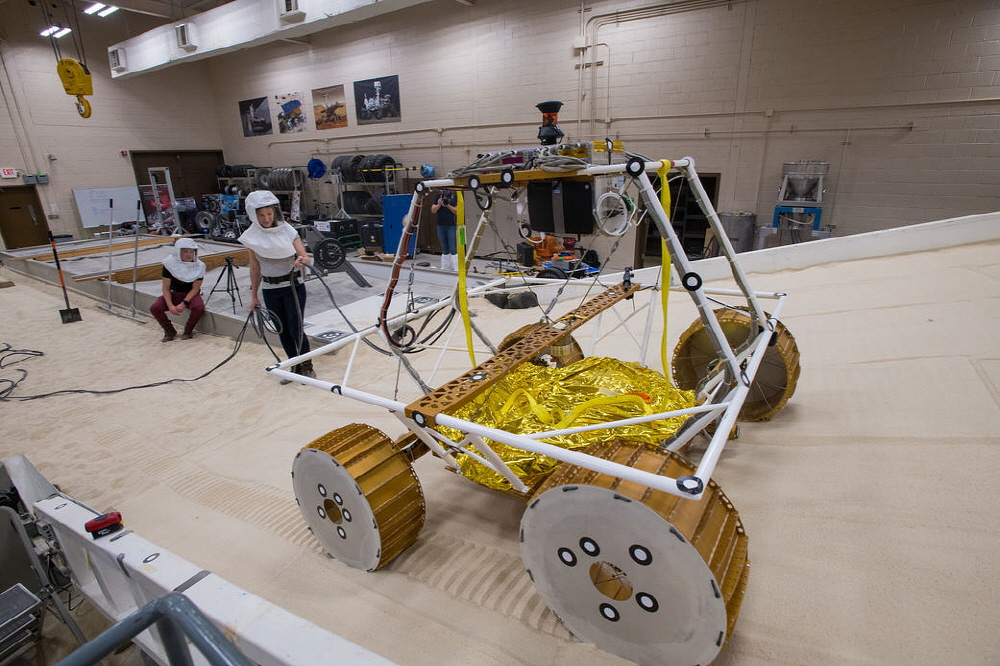
NASA conducted a run test of the lunar rover VIPER engineering model at the Simulated Lunar Operations Laboratory (SLOPE), a simulated lunar environment at the Glenn Research Center in Ohio.
As part of the Artemis plan, Viper plans to land on the moon in 2022 and find ice believed to be in Antarctica. On this day, the Johnson Space Center research team that develops the Viper, together with the Glen Research Center team, manipulated the Viper engineering model consisting of almost only frames and wheels, and determined the traction value of the wheels required for the rover, and the power required for operation assuming various cases. Comparison and examination of steep slope frequency methods were conducted.
The Viper uses four scientific instruments, including a 1-m long drill, to travel several miles to inspect various soil samples and to determine if there is enough water for the mission at a future lunar base. In the Artemis project, not only Viper but also an astronaut will land directly on the moon to conduct ice exploration.
Viper is being developed jointly within and outside of NASA. Leading the project is the Ames Research Center in Silicon Valley, where mission and systems engineering, rover operation and software development are conducted. In addition, the rover body is developed by the Kennedy Space Center in Florida, and Honeybee Robotics, California, is participating as a commercial partner. If the development and launch programs proceed as scheduled, activities will begin in December 2022. Related information can be found here .


















Add comment